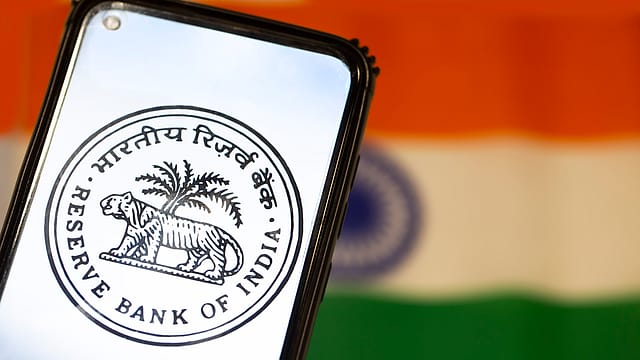Inflation genie still out of the bottle: RBI
ADVERTISEMENT

The Reserve Bank of India (RBI) in its monthly bulletin for August says the genie of inflation is still out of the bottle. Headline inflation is expected to average well above 6% in the second quarter with the unprecedented shock of higher tomato prices spilling over to prices of other vegetables, the central bank says.
India's retail inflation surged to a 15-month high of 7.44% in July from 4.87% in June, breaching the Reserve Bank of India's 6% upper tolerance limit. Inflation in the food and beverages group more than doubled to 10.6% in July from 4.7% in June led by high vegetable prices. Inflation also edged up in cereals, meat and fish, fruits, pulses, sugar and spices. On the other hand, inflation in eggs, milk and prepared meals softened while the rate of deflation in edible oils eased.
This comes even as India's core inflation witnessed a moderation in July, extending a softening bias that set in from February 2023.
"The incidence of supply shocks is not over - elevation in vegetable prices has extended into the first half of August… The vulnerability of the economy to recurring incidence of vegetable price shocks, especially ahead of and during the monsoon warrants major reforms in perishable supply chains covering transportation networks, warehousing and storage technologies, and value addition processes that damp the amplitude of these swings," the RBI says.
December 2025
The annual Fortune 500 India list, the definitive compendium of corporate performance, is out. This year, the cumulative revenue of the Fortune 500 India companies has breached $2 trillion for the first time. Plus, find out which are the Best B-schools in India.
Stable prices for consumers, assured supplies and remunerative proceeds for farmers will follow when these reforms lead to efficiency and productivity gains while preserving the quality of output and building up insulation against food inflation from climatic events, the central bank explains.
The RBI further cautions that the shadow of El Nino looms over the second half of the year and the outcome for food inflation in the rabi season. "Yet another upside risk is the outlook on crude oil prices that is marred by 'engineered' supply shortfalls. There is a diminishing probability of crude price pressures easing over the rest of the year. This bodes ill for net energy importers like India," it warns.
"It is heartening to note that demand restraint exercised by monetary policy and supply augmenting measures are offsetting these price pressures considerably. In the absence of these policy responses, the inflation outlook would have been far more adverse," the RBI says.
The commitment to remain anti-inflationary should quell threats to macroeconomic stability and help anchor expectations, according to RBI. Households expect inflation to edge down over the year ahead. This is also reflected in the latest round of the consumer confidence survey with regard to the price situation.
Headline inflation moderated across most economies. As per estimates, inflation in the Euro area further moderated to 5.3% in July 2023, its lowest level since January 2022. In the U.S., CPI inflation edged up to 3.2% in July from 3% last month.
"Overall, inflation is projected to remain above target in 2023 in 96% of economies with inflation targets. The international inflation environment is rendered fragile again. The question is: will central banks plod on with tightening monetary policy even as the global economy loses momentum? So far, most AEs have raised their policy rates by 25 basis points in their latest meeting while most EMEs kept their policy rates on hold," the RBI says.
The IMF estimates that global headline inflation may yield by close to 2 percentage points in 2023 from a year ago, but this is predicated on declining international commodity prices which are now imperilled.
